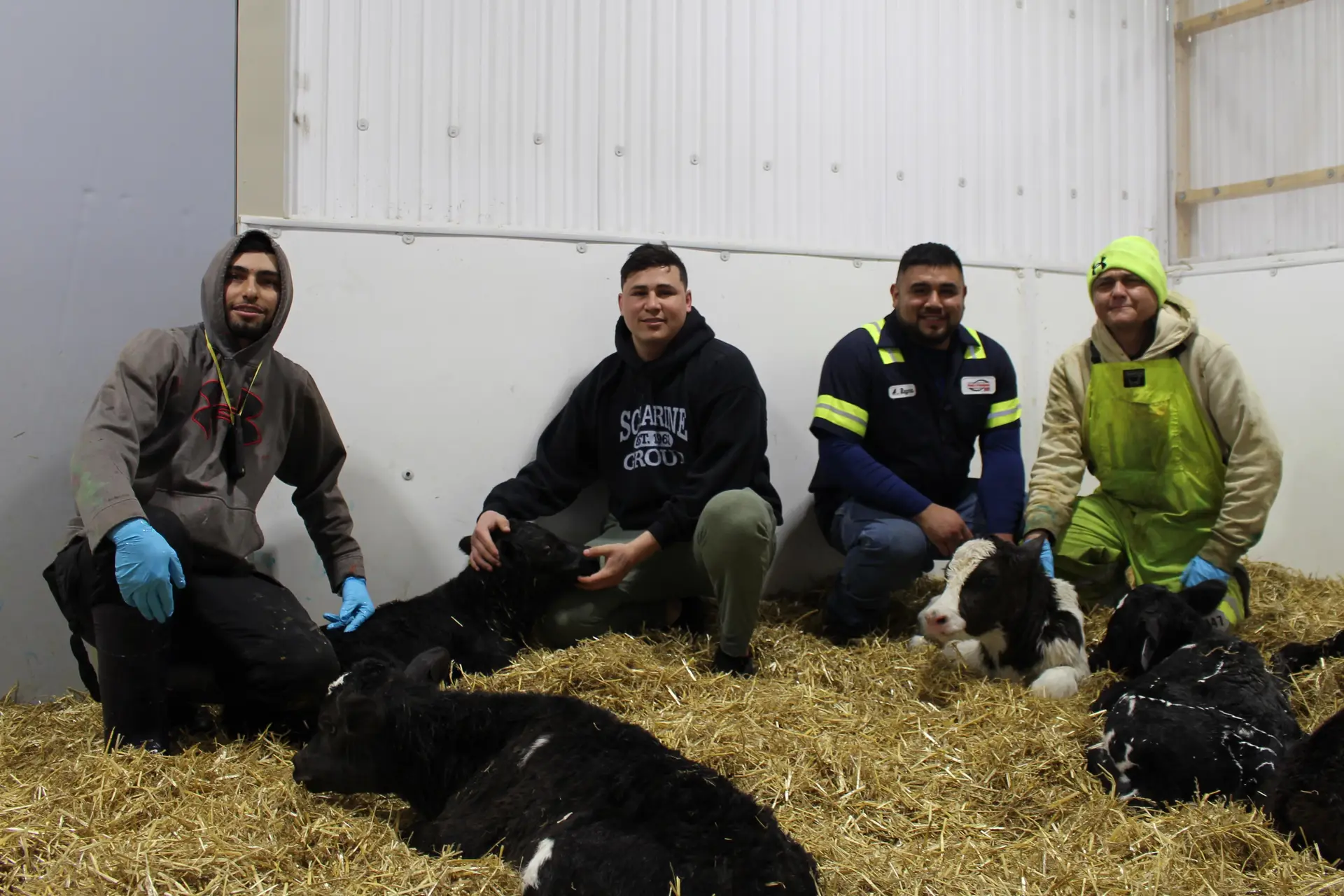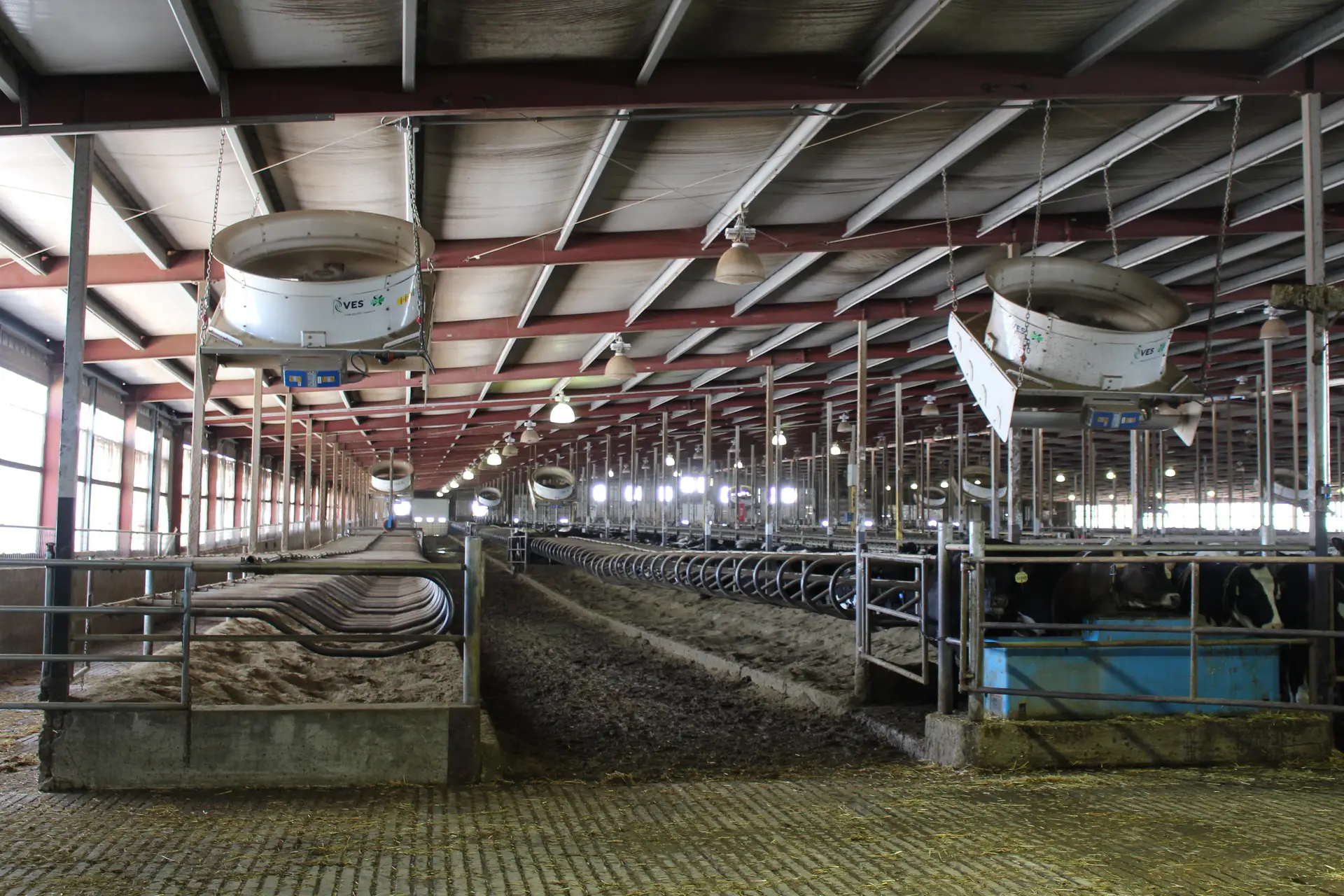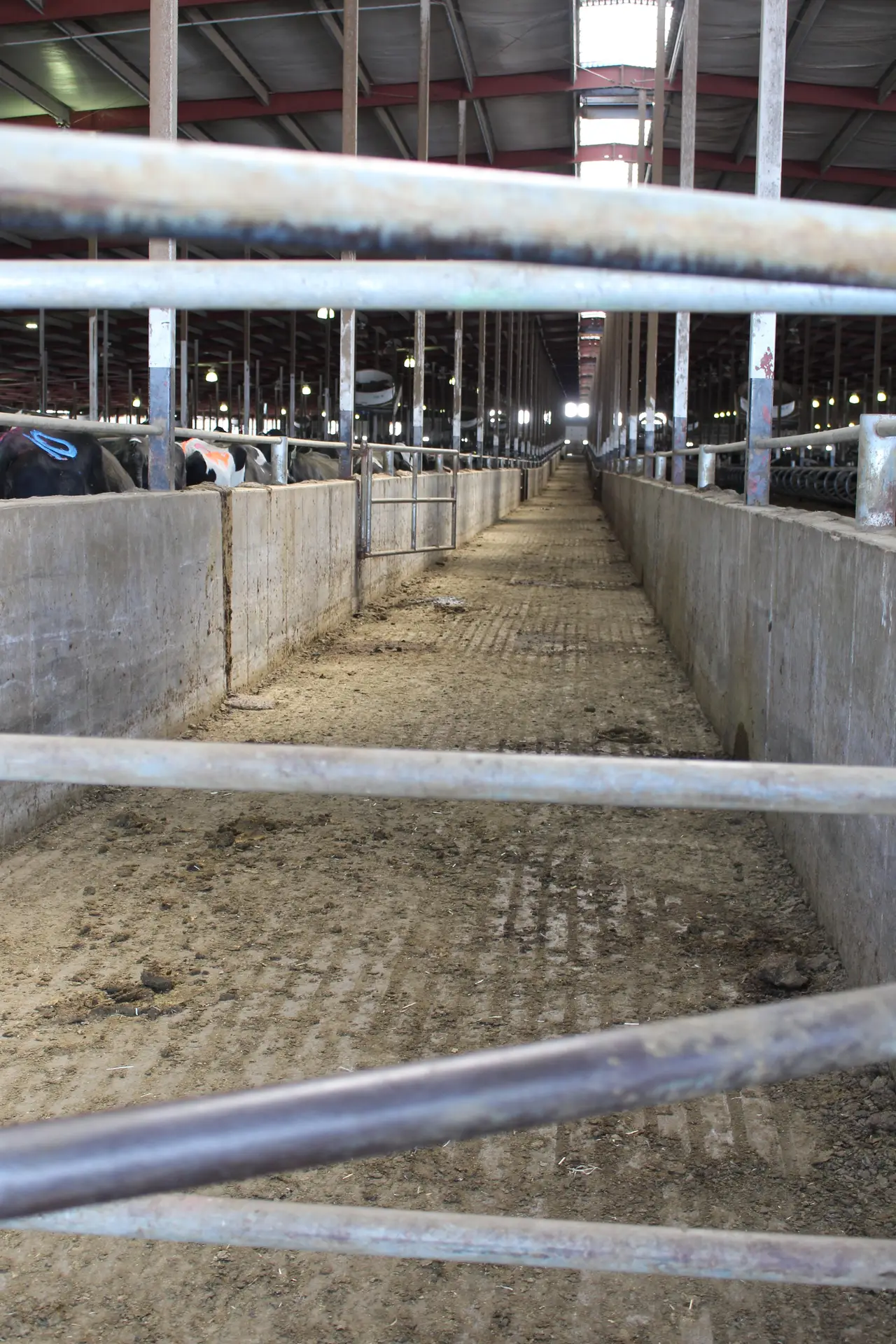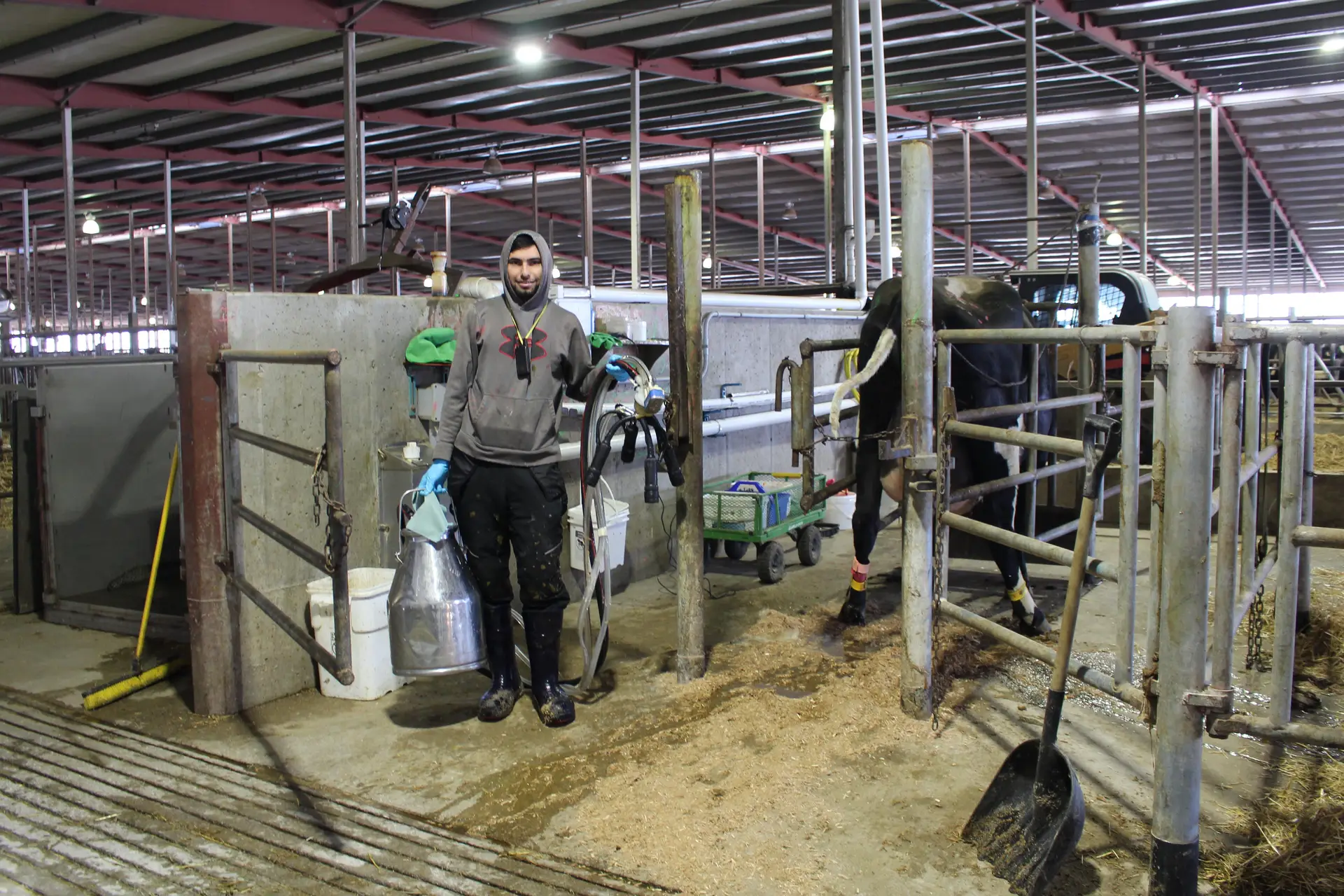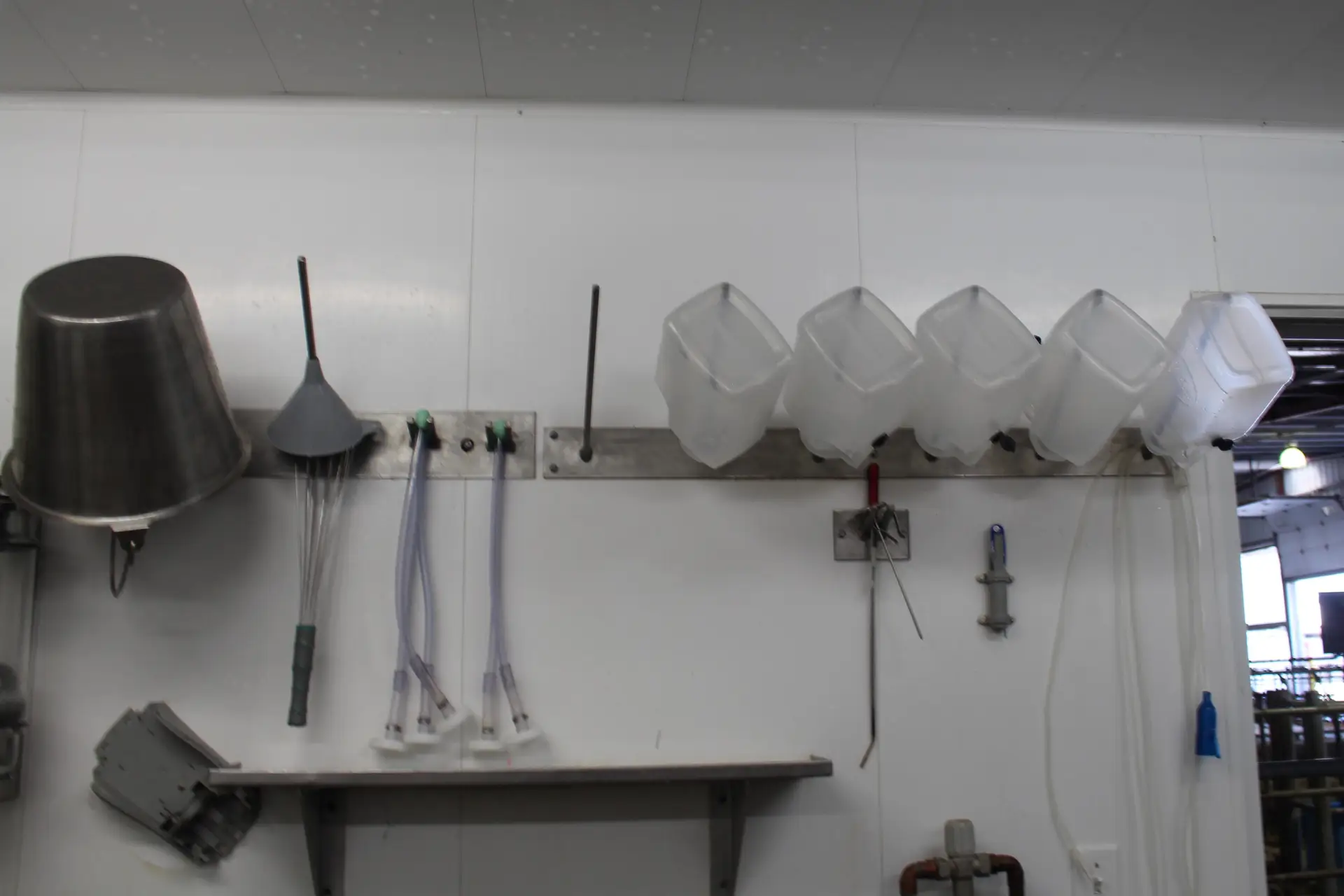
Virtual Farm Tour: Pagel’s Ponderosa Dairy, LLC
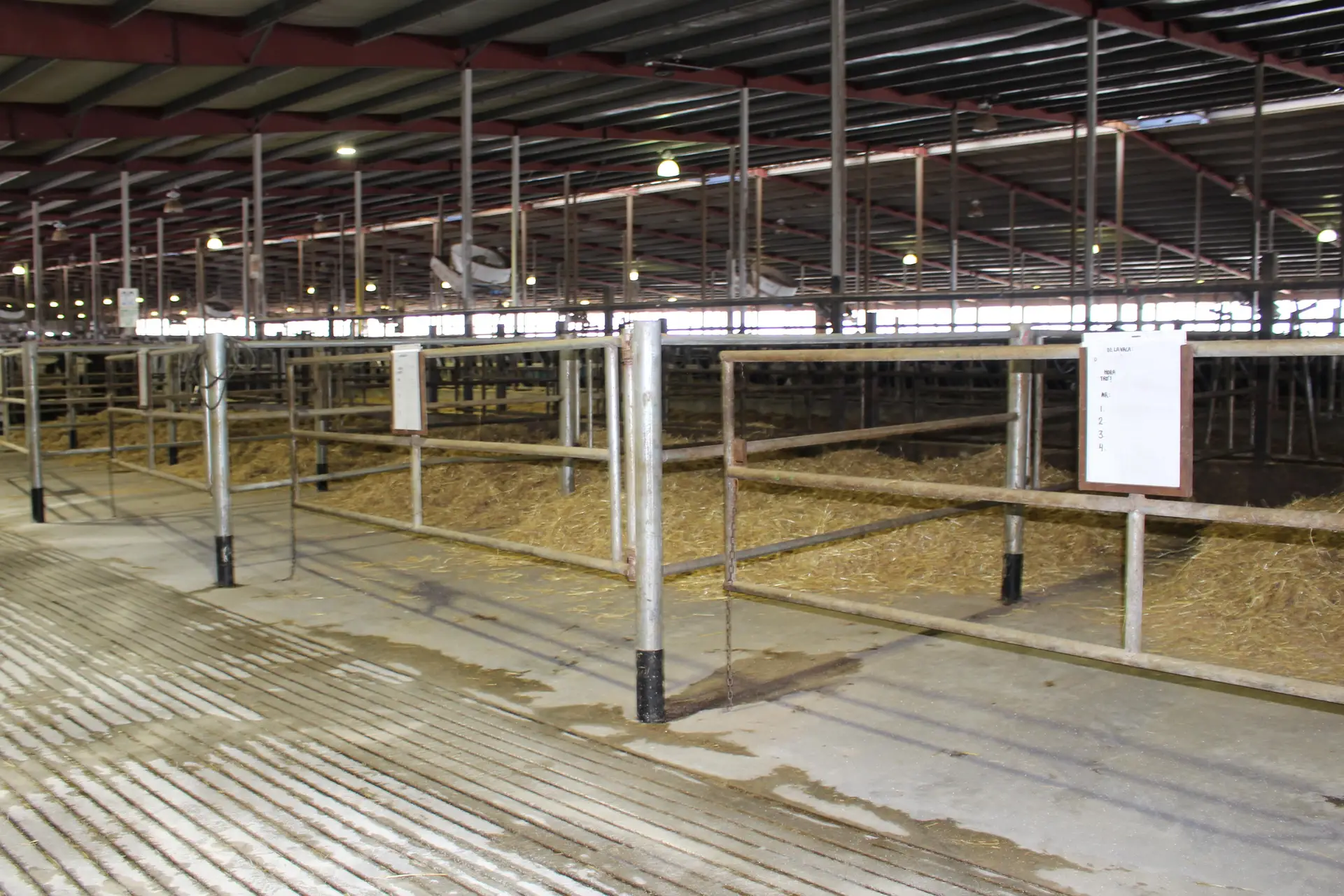
Between 20 and 40 calves are born at Pagel’s Ponderosa Dairy each day. The maternity area includes nine calving pens. Dry erase boards on each pen are used to track the calving process. A high-attention pen is located directly across from the fresh cow manager’s office so that he can closely monitor any animals that might need extra attention.
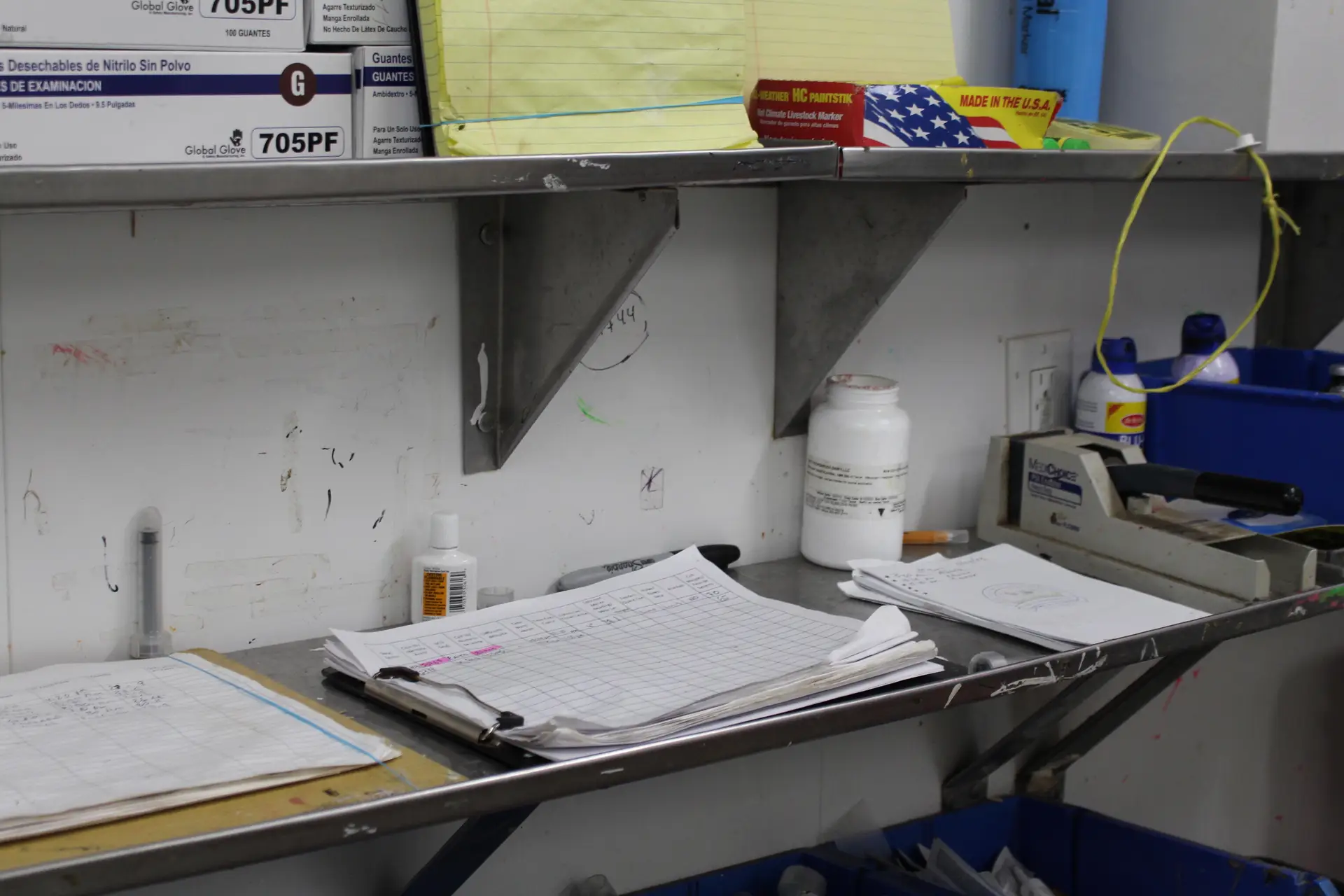
The maternity employees track calving and colostrum data on this chart and the fresh cow manager enters it as a fresh cow event in DairyComp. Serum total protein concentration is measured in every calf on day two and that data is reported back to the maternity team so they can continually evaluate the effectiveness of their colostrum procedures.
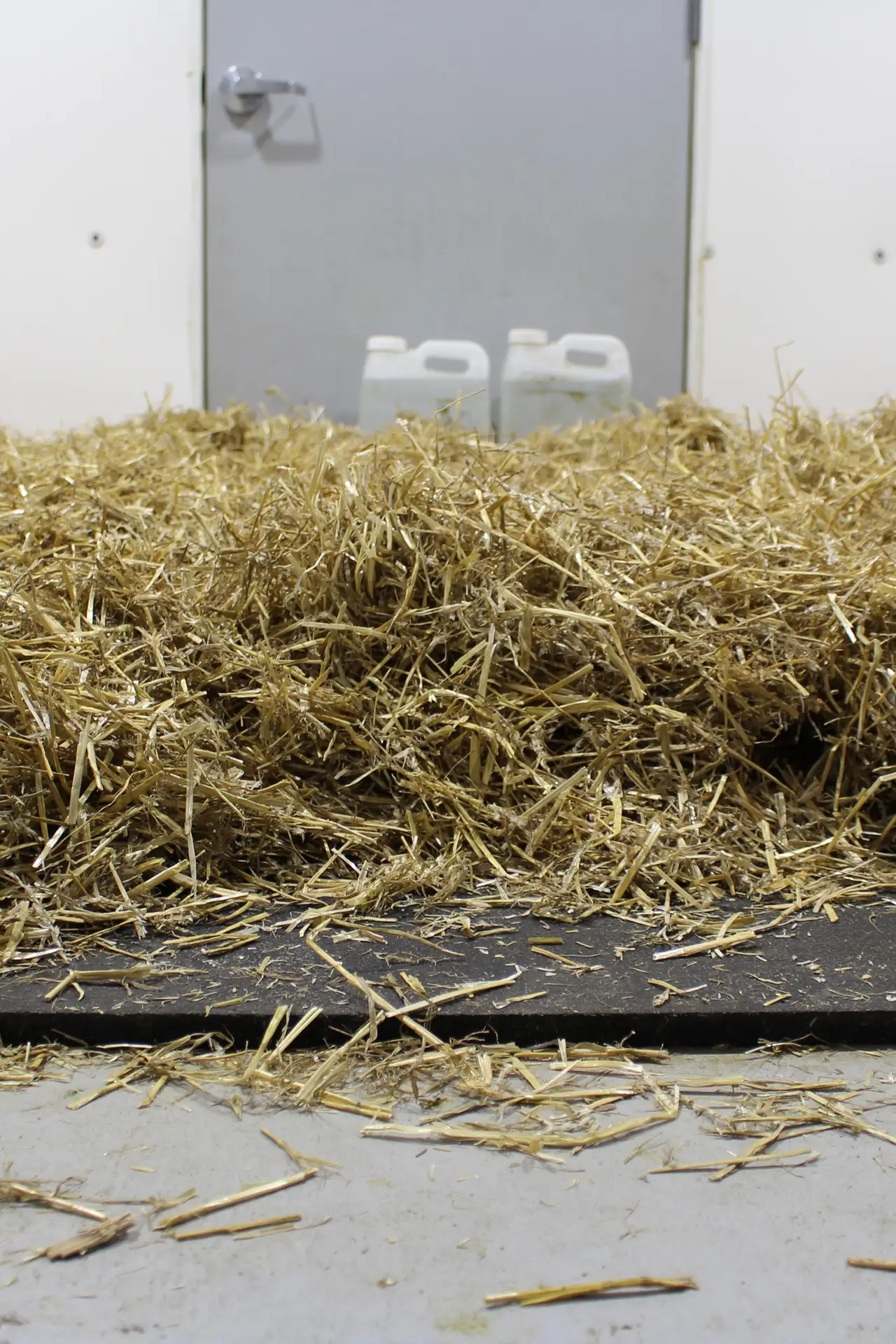
A year ago, Pagel’s Ponderosa Dairy switch from individual newborn pens to these group pens. A rubber mat is placed beneath deep straw betting and heaters maintain a room temperature of 60 degrees. The door in the back of the pen opens to the exterior of the barn, which allows calf ranch employees to pick up calves without entering the dry cow barn. Szydel said this enhances biosecurity and limits traffic near the calving pens.
Pagel’s Ponderosa Dairy, LLC’s maternity facilities minimize stress for animals, employees
Between 20 and 40 calves are born each day at Pagel’s Ponderosa Dairy, LLC in Kewaunee, Wisconsin. With exceptional animal care as a top priority on the farm, the team continually looks for opportunities to learn, evolve, and adopt new strategies to minimize stress – both for the animals and the employees – during each calving.
Chris Szydel is the herd manager and has been with Pagel’s Ponderosa Dairy for 28 years. He said the farm has had three different maternity facilities during his tenure. The current maternity facilities are located in the dry cow barn, which was built in 2013. Last year, the farm renovated the maternity area, installing group pens for newborn calves to replace the individual pens they had been using. Szydel said they made the change after seeing the system’s success at their sister farm, Dairy Dreams, in nearby Casco, Wisconsin.
Szydel pointed out several benefits to the group pens:
- Heaters are used to keep the rooms at 60 degrees F, which is safer than using heat lamps in individual pens.
- Employees have more space to work with newborn calves.
- An exterior door in each pen allows the calf ranch team to pick up calves twice a day without entering the dry cow barn. This enhances biosecurity and limits traffic near the calving pens.
- Pens are easily cleaned and sanitized between groups of calves.
The barn includes two pens for close-up dry cows and one pen for close-up heifers. Animals are moved to the close-up pens between 21 and 27 days pre-calving. Szydel said it is essential to not overcrowd the close-up pens; he would rather move cows more frequently than overcrowd the pens. The close-up pens are checked every 20 to 25 minutes and cows are moved into calving pens when feet are presented. Szydel said drover’s lanes make moving the cows a more-efficient and lower-stress process. The compact layout of the maternity area allows employees to take fewer steps, increasing convenience and giving them more time to focus on the animals.
Each of the nine calving pens has a mounted dry erase board for employees to note when they checked on the cows. Szydel said several digital clocks added throughout the barn help employees track the calving process. He also noted that one employee is assigned to a cow for the entire process – from moving her into the pen to processing the newborn calf to colostrum milking and feeding. This eliminates miscommunication between employees.
When a cow is moved to a calving pen, she is examined for fetal position right away. If all feels normal, she is left alone to freshen. If problems are noted, they can be more easily corrected before labor progresses too far. If the cow requires assistance, the maternity team pumps uterine lubricant into the uterus to reduce friction, protecting both the cow and calf. No mechanical puller is used.
Newborn calves are transported from the calving pen via a wheelbarrow. The wheelbarrow is placed on a scale to capture the animal’s birthweight. Navels are dipped and heifer calves receive their ear tags right away. A blow dryer and towels are used to vigorously dry newborns before they are placed in the group pen. The dam is milked within 20 minutes of birth; colostrum is tested with a Brix refractometer and must score greater than 22% to be fed to calves. The calf receives 4 quarts of maternal colostrum (or a colostrum replacer if maternal colostrum is not of high enough quality or quantity) via esophageal feeder.
The maternity area is staffed by the fresh cow manager and six employees. Szydel said these employees generally are longer-tenured employees that have demonstrated excellent cow handling skills and patience. With a big focus on communication, employees meet weekly to discuss what works well and what can be improved, and brush-up on protocols and training.
Video cameras installed in the maternity area capture footage of every calving. In the event of a calf death, the video feed is used as an educational tool: The team watches it and discusses what steps could be taken to prevent a similar scenario in the future. Szydel said he’s found it very important to encourage employees to come up with their own ideas for improvement and support them in implementing those ideas.
He said, “When you encourage and support them, more great ideas will follow.”
| Category: |
Animal handling Animal health Calf and heifer nutrition Colostrum management Cow comfort Equipment Facility design Starting Strong - Calf Care |


